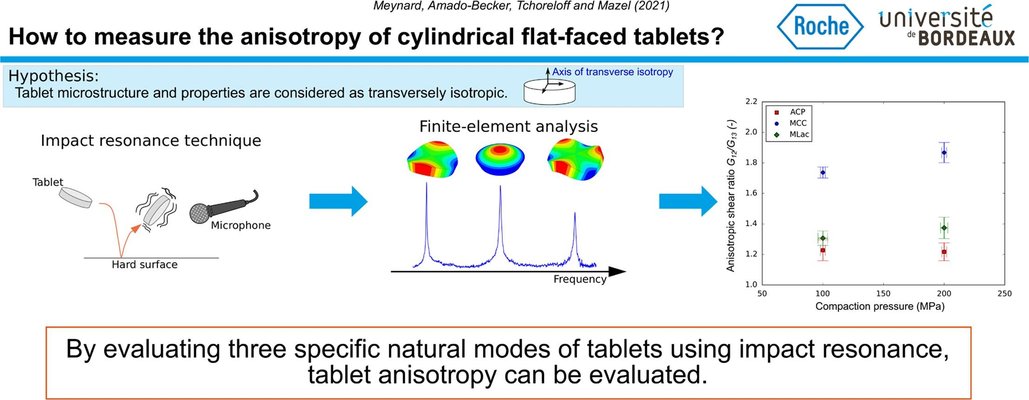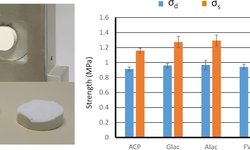Scientific papers
Capping and lamination are common defects encountered in the pharmaceutical tablet manufacturing process. Numerous studies have indicated that tablet anisotropy can contribute to the occurrence of such defects. This study introduces a novel and straightforward methodology to characterize the anisotropy of flat-faced cylindrical tablets, considered transversally isotropic due to the manufacturing process. The characterization involves the examination of their elastic properties using the impulse excitation technique and finite-element method (FEM) simulations. Tablets with a thickness-to-diameter ratio ranging between [specified values] were investigated.
FEM simulations demonstrated the feasibility of determining three out of the five elastic constants of the tablet by utilizing the first three natural vibration modes. An anisotropic index was subsequently formulated as the ratio of the two apparent shear moduli. To simplify the estimation of tablet anisotropy and eliminate the need for consistent FEM simulations, an analytical model was developed. This model only necessitates measurements of tablet dimensions and the first three natural frequencies. Experimental measurements on tablets composed of standard pharmaceutical excipients were conducted using this technique, and the results were consistent with existing literature, affirming the methodology as a quick, easy, and reliable means of characterizing tablet anisotropy.

Comments
No comments posted yet.
Add a comment















